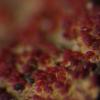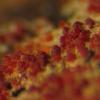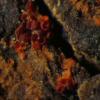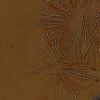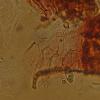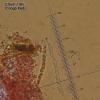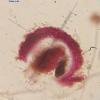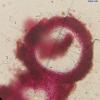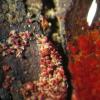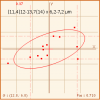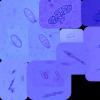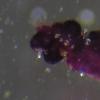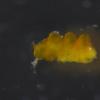
02-01-2026 17:43
MARICEL PATINOHi there, although I couldn't see the fruitbody, I

01-01-2026 18:35
Original loamy soil aside a artificial lake.The co

31-12-2025 19:27
Collected from loamy soil, at waterside (completel

30-12-2025 16:44
Pascal DucosBonjour,Une anamorphe rose stipitée, très nombre

30-12-2025 17:14
 Bernard CLESSE
Bernard CLESSE
Bonjour à toutes et tous,Pourriez-vous aider Albe
Cosmospora
Stephen Martin Mifsud,
20-12-2018 12:34
 Some 4 years ago I found something similar and was tentatively identified as Cosmospora flavoviridis. Maybe I found the same species and was wondering if maybe there have been some update on the taxonomy of this group.
Some 4 years ago I found something similar and was tentatively identified as Cosmospora flavoviridis. Maybe I found the same species and was wondering if maybe there have been some update on the taxonomy of this group.Macro-Data:
==========
Perithecium 0.15 - 0.25mm, bright red, (deep violet in KOH, yellow-amber in lactic acid) pyriform or subglobular with an ostiole which sometimes opens up to form a cupulate ascoma in mature specimens. Wall approx 30-40um thick, composed of angular cells with thick walls. Fruiting bodies apparently have an orange substromatal layer growing over a black stroma of some pyrenomycete
Micro-data
=======
Asci cylindrical, 80-100um, do not stain very well in Congo red, very hyaline, thin bit rim thick walled with a pore-like opening, J-ve.
Ascospores fusiform-ellipsoid to navicular (shape of the outline of a ship), with a thick central septum, spore wall constricted at this area, sometimes the two halves at an obtuse (160-170 degrees) angle hence the longitudinal axis is not straight, 14-18.3 (mean 16.0) x 5.4-6-7 (mean 6.1) with a Q of 2.3-3.3 (mean 2.7), smooth or minutely warted. Oil content amorphous or sometimes in two oil bodies, one per each side.
If anyone wants a sample I have some which are nicely preserved... maybe a cryptic species that needs to be described, or just Cosmpospora flavoviridis (with a fusarium ananmorph if same as the one I found 4 years ago).
Mlcoch Patrik,
21-12-2018 19:22

Re : Cosmospora
I solved pyrenomyceticolous Nectriaceae some seasen yet, and I have many collections of Cosmospora flavoviridis. Baral has two species nom. prov as Cosmospora diatrypicola and "Nectria epibullata", but according to me this collection are C. flavoviridis. It is possible, that existing intraspecies variability or so, that they are cryptic species. But we will be have to do extensive phylogenetic study, so that we can prove it. And don´t nobody it. For example I get this two pictures - 4-11-18 db2 is typical C. flavoviridis and db3 is untypical C. flavoviridis.
Christian Lechat,
22-12-2018 06:26

Re : Cosmospora
Hi to all,
to identify cosmospora-like it is absolutely necessary to know its asexual stage, without it and molecular data it is impossible. it would be interesting to see the hymenium in water or in lactic cotton blue rather than in congo red, this dye is not useful for observation of nectria-like fungi. In addition, according the provided images of ascomata in natural environment, I do not recognize "Cosmospora flavoviridis such as I see it.
Regarding "Cosmospora diatrypicola", this taxon does not yet exist.
All the best,
Merry Christmas,
Christian
Mlcoch Patrik,
22-12-2018 13:32

Re : Cosmospora
Yes, I am agree,
C. diatrypicola is spec. nom. prov., but I know it - https://drive.google.com/drive/folders/0B5SeyOEkxxZhYVFpaHZvZ28zWU0
Ascoma is macroscopicaly identical with other species of Cosmospora, it isn´t determinate characters.
C. diatrypicola is spec. nom. prov., but I know it - https://drive.google.com/drive/folders/0B5SeyOEkxxZhYVFpaHZvZ28zWU0
Ascoma is macroscopicaly identical with other species of Cosmospora, it isn´t determinate characters.
Stephen Martin Mifsud,
23-12-2018 17:18

Re : Cosmospora
Dear friends. thank you for your help.
1. Some material have been inoculated on PDA and Czapek Agar and hopefully, we get the Anamorph without contamination. Two plates from a spore extract in water including fragments of the hymenium, one plate from direct ascoma on agar. I try to inoculcate on Yeast Extract Agar too.
2. Mounted in cotton blue as requested - the surface of the spores seem to be very bumpy (larger from cfr bullata)
3. In lactic acid ascoma get amber
4. I can send you specimens for genetics or own observation
5. The ascospores are somewhat different from what I have seen in Patrick Micoch gallery. There, the spore are uniformly rounded, while the spores of my sample are boat-shaped.
1. Some material have been inoculated on PDA and Czapek Agar and hopefully, we get the Anamorph without contamination. Two plates from a spore extract in water including fragments of the hymenium, one plate from direct ascoma on agar. I try to inoculcate on Yeast Extract Agar too.
2. Mounted in cotton blue as requested - the surface of the spores seem to be very bumpy (larger from cfr bullata)
3. In lactic acid ascoma get amber
4. I can send you specimens for genetics or own observation
5. The ascospores are somewhat different from what I have seen in Patrick Micoch gallery. There, the spore are uniformly rounded, while the spores of my sample are boat-shaped.
Christian Lechat,
24-12-2018 05:14

Re : Cosmospora
Ok Stephen, let's wait for your cultures results. Did you identify the pyrenomycetous host? this identification is an important step in identifying cosmospora-like species.
As Patrick says, all species of cosmospora-like are mophologically nearly identical, only their asexual morph allow to separate them.
Good luck with cultures
Christian




